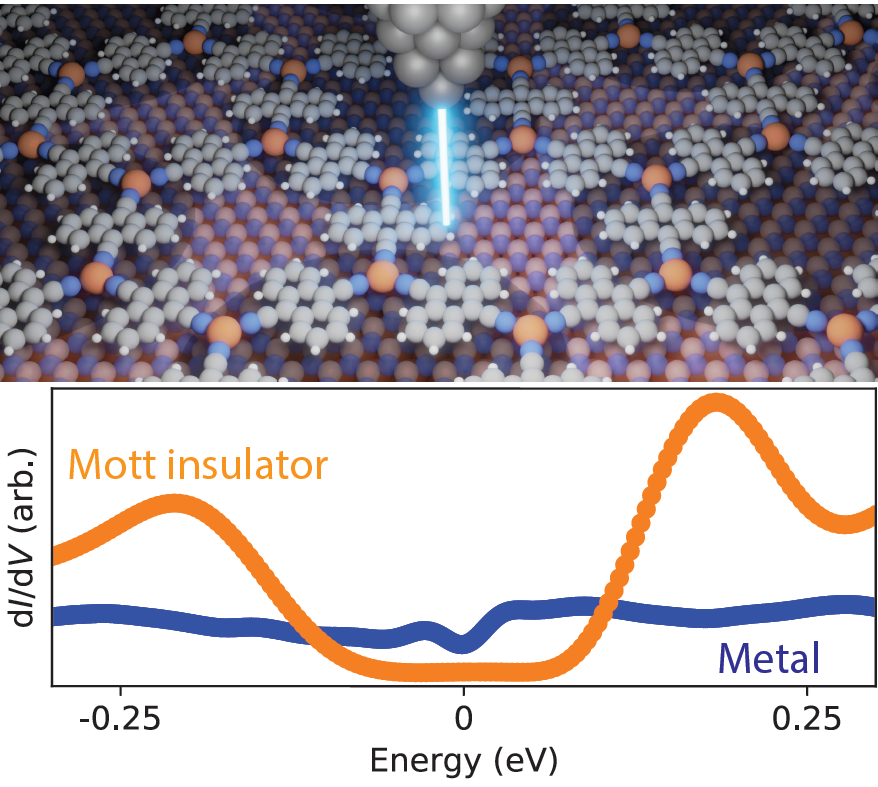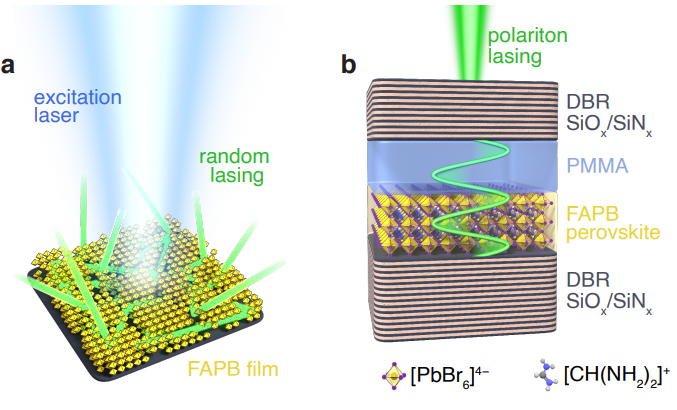Featured Publications

Local gate control of Mott metal-insulator transition in a 2D metal-organic framework
Authors: Benjamin Lowe, Bernard Field, Jack Hellerstedt, Julian Ceddia, Henry L. Nourse, Ben J. Powell, Nikhil V. Medhekar & Agustin Schiffrin
Journal: Nature Communications, Date: April, 2024
Abstract:
Electron-electron interactions in materials lead to exotic many-body quantum phenomena, including Mott metal-insulator transitions (MITs), magnetism, quantum spin liquids, and superconductivity. These phases depend on electronic band occupation and can be controlled via the chemical potential. Flat bands in two-dimensional (2D) and layered materials with a kagome lattice enhance electronic correlations. Although theoretically predicted, correlated-electron Mott insulating phases in monolayer 2D metal-organic frameworks (MOFs) with a kagome structure have not yet been realised experimentally. Here, we synthesise a 2D kagome MOF on a 2D insulator. Scanning tunnelling microscopy (STM) and spectroscopy reveal a MOF electronic energy gap of ∼200 meV, consistent with dynamical mean-field theory predictions of a Mott insulator. Combining template-induced (via work function variations of the substrate) and STM probe-induced gating, we locally tune the electron population of the MOF kagome bands and induce Mott MITs. These findings enable technologies based on electrostatic control of many-body quantum phases in 2D MOFs.
Robust Room-Temperature Polariton Condensation and Lasing in Scalable FAPbBr3 Perovskite Microcavities
Authors: Mateusz Król, Mitko Oldfield, Matthias Wurdack, Eliezer Estrecho, Gary Beane, Yihui Hou, Andrew G Truscott, Agustin Schiffrin & Elena A Ostrovskaya
Journal: arXiv preprint, Date: July, 2024
Abstract:
Exciton-polariton condensation in direct bandgap semiconductors strongly coupled to light enables a broad range of fundamental studies and applications like low-threshold and electrically driven lasing. Yet, materials hosting exciton-polariton condensation in ambient conditions are rare, with fabrication protocols that are often inefficient and non-scalable. Here, room-temperature exciton-polariton condensation and lasing is observed in a microcavity with embedded formamidiniumlead bromide (FAPbBr3) perovskite film. This study demonstrates the excellent potential of the FAPbBr3 perovskite as a new material for room-temperature polaritonics, with the added value of efficient and scalable fabrication offered by the solution-based spin-coating process.


Scanbot: an STM automation bot
Authors: Julian Ceddia, Jack Hellerstedt, Benjamin Lowe & Agustin Schiffrin
Journal: Journal of Open Source Software, Date: July, 2024
Abstract:
Scanning Tunnelling Microscopes (STM) are capable of obtaining images of surfaces with atomic scale resolution. They accomplish this by scanning an atomically sharp probe across the surface of a sample while monitoring an electric current. The quality of STM images depends greatly on the exact geometry and composition at the apex of the scanning probe. Blunt tips result in blurry images, while contaminated tips can interact with the sample during a scan to produce noisy images. To improve image quality, the probe can be conditioned via a process called 'tip shaping', which involves poking the apex of the probe into a clean metallic substrate to reshape it. This is a somewhat random process that is repeated until a tip capable of acquiring images of sufficient quality is achieved. Along with surveying samples to locate regions of interest, tip shaping is a necessary, time-consuming task performed by a trained human operator. The simple and iterative-nature of these tasks makes them ideal to control via simple algorithmic and machine-learning protocols. This project, dubbed 'Scanbot', automates probe conditioning and sample surveying, along with several other STM data acquisition techniques.
Publications
Upper Bound Estimate of the Electronic Scattering Potential of a Weakly Interacting Molecular Film on a Metal
Authors: Dhaneesh Kumar, Matthew Hendy, Jack Hellerstedt, Joanna Hewes, Shon Kolomoisky, Cornelius Krull, Agustin Schiffrin
Journal: The Journal of Physical Chemistry C, Date: Jan, 2024